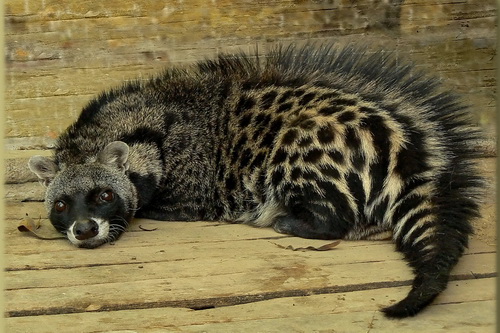Facts About African civet
The African civet is a fascinating creature native to sub-Saharan Africa, typically found in woodlands and secondary forests. While it is listed as Least Concern on the IUCN Red List, it still faces significant threats, primarily from hunting for the perfume industry.
This nocturnal and solitary animal is omnivorous, meaning it consumes a variety of foods ranging from small animals and carrion to vegetation. One of the most striking features of the African civet is its distinctive coloration, which includes unique markings, a prominent dorsal crest, and large hindquarters.
Initially, scientists classified the African civet under the genus Viverra, but it was later assigned to its own genus, Civettictis. Over time, various subspecies have been proposed. Interestingly, the African civet is closely related to the genus Viverra, with their evolutionary paths diverging around 12.3 million years ago.
The name Civettictis is a combination of the French word "civette" and the Greek word "iktis" meaning weasel. The civet's fur comes in various colors, featuring prominent markings. It has a powerful bite, a well-developed skull, and strong muscles. Notably, it is the largest viverrid in Africa, with females being slightly smaller than males.
You can find the African civet in several African countries, including parks and protected areas. It exhibits some unique behaviors, such as depositing its feces in specific latrines and raising its dorsal crest when it feels threatened. Its diet is quite diverse, including rodents, reptiles, insects, fruits, and seeds. Female civets are polyestrous, meaning they can give birth to one to four young multiple times a year.
Despite its resilient status, the African civet faces threats from hunting for bushmeat and the extraction of civetone, a substance from its perineal glands used in the perfume industry. The methods used to extract civetone are often cruel and have drawn significant criticism from animal rights activists.
Conservation efforts are crucial to protect this unique species from further decline due to human activities. By addressing these threats, we can help ensure that the African civet continues to thrive in its natural habitat.

 Sierra Leone
Sierra Leone